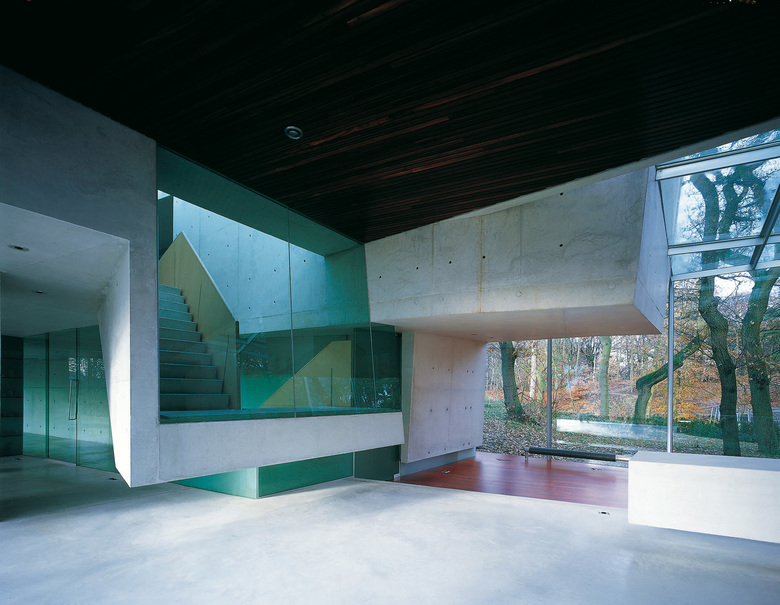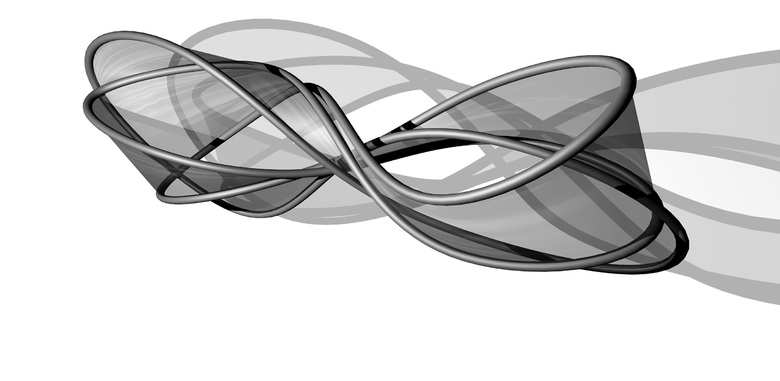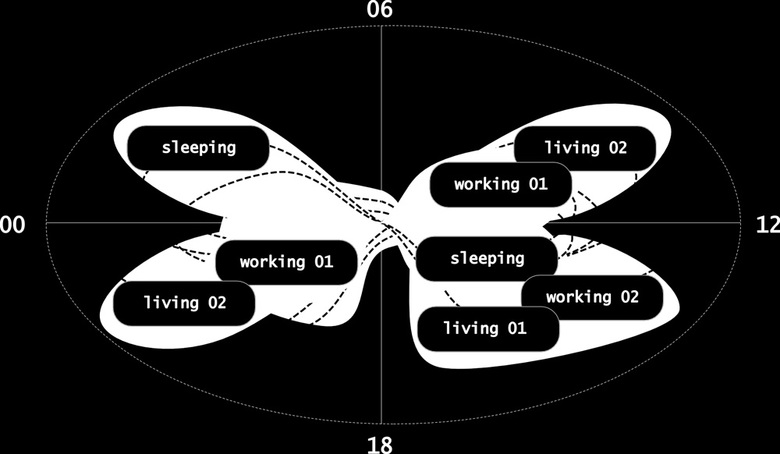Möbius House
With its low-slung, elongated outlines the private house forms a link between the different features of the surroundings; the spatial loop enables the house to take in the extreme aspects of the landscape. By being stretched to the maximum, rather than displaying a compact or tall shape, the house conveys from the interior the idea of a walk in the countrysite.
The Möbius loop, the spatial quality of which means that it is present in both plan and section, translates into the interior into a 24-hour cycle of sleeping, working and living. As the loop turns inside out the materialization follows these change-overs; glazed details and concrete structural elements swap roles as glazed facades are put in front of the concrete construction, dividing walls are made of glass and furniture such as tables and stairs are made of concrete.
The diagram – The diagram of the double-locked torus conveys the organization of two intertwining paths, which trace how two people can live together, yet apart, meeting at certain points, which become shared spaces. The idea of two entities running their own trajectories but sharing certain moments, possibly also reversing roles at certain points, is extended to include the materialization of the building and its construction. The instrumentalization of this simple, borrowed drawing is the key. The two interlocking lines are suggestive of the formal organization of the building, but that is only the beginning; diagrammatic architecture is a process of unfolding and ultimately of liberation. The diagram liberates architecture from language, interpretation, and signification.
The diagram for the Möbius house consists of two interlocking lines. The double-locked torus integrates programme, circulation and structure seamlessly. As the diagram unfolds, the interlocking lines come to stand for the two main materials used for the house, glass and concrete, which move in front of each other and switch places.
The abstraction of the diagram facilitates different interpretations, such as working with two materials and using time in relation to the distribution. As a graphic representation of 24 hours of family life, the double-locked torus acquires a time-space dimension, which leads to the implementation of the Möbius band. The unfolding of time and the internal regulation of the program relate to the concept of the double-locked torus. Equally, the site and its relationship to the building are important for the design. The site covers two hectares, which are divided into four areas distinct in character. Linking these with the internal organization of the Möbius band transforms living in the house into a walk in the landscape.
The mathematical model of the Möbius is not literally transferred to the building, but is conceptualized or thematized and can be found in architectural ingredients, such as the light, the staircases, and the way in which people move through the house. So, while the Möbius diagram introduces aspects of duration and trajectory, the diagram is worked into the building in a mutated way.
- Ano
- 1998



